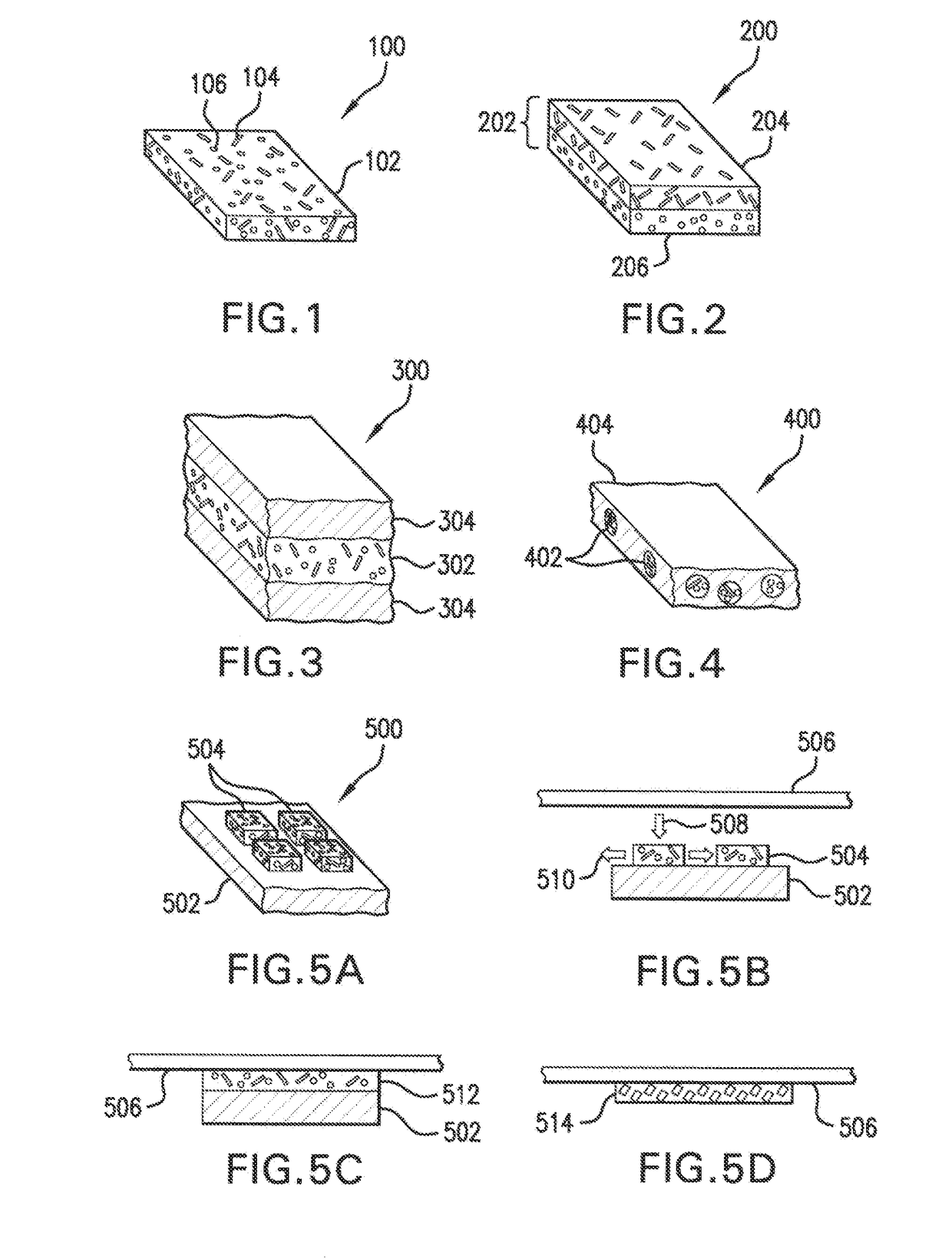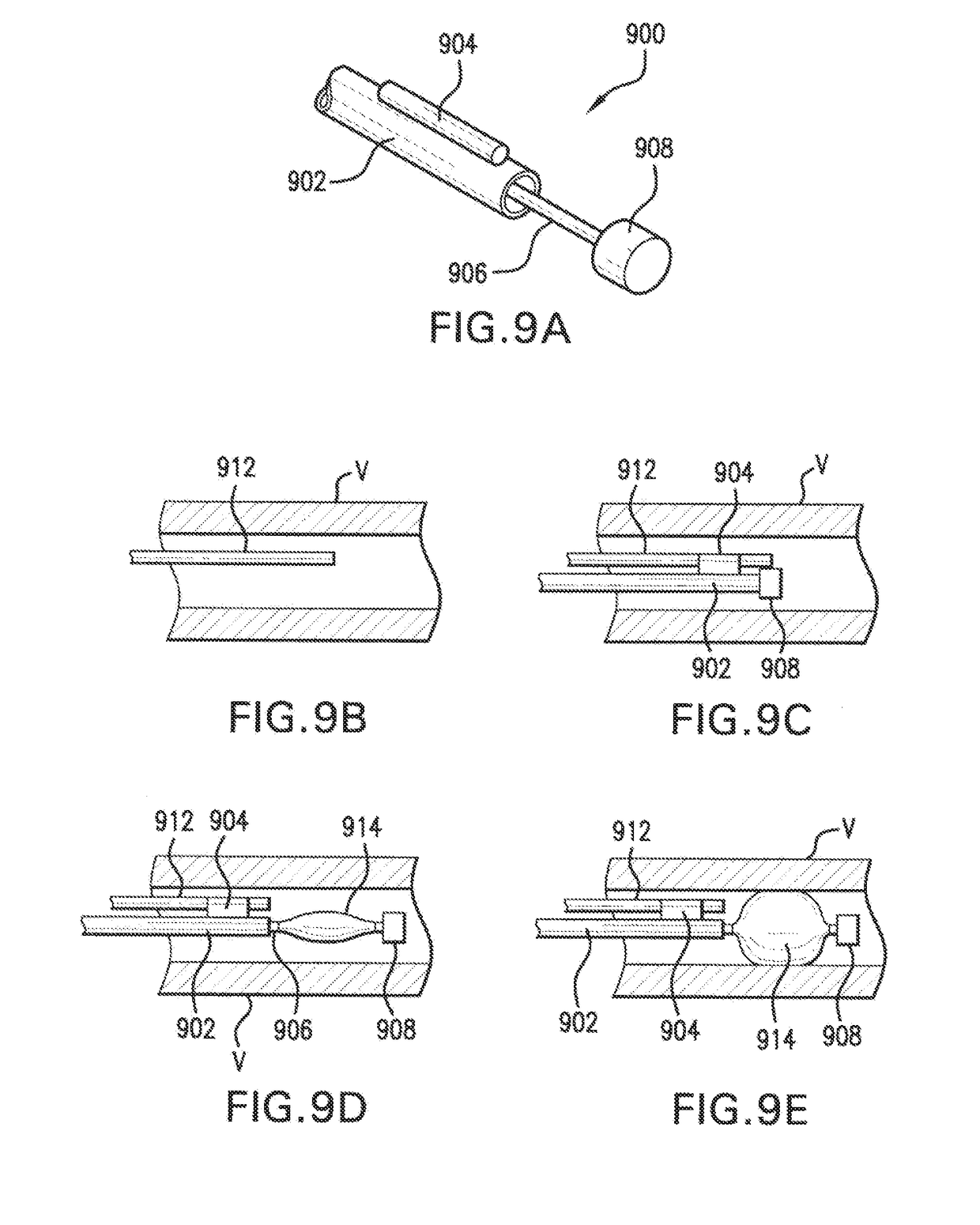Free-standing biodegradable patch
a biodegradable, patch technology, applied in the direction of inorganic non-active ingredients, catheters, peptides/protein ingredients, etc., can solve the problems of stent implantation carries a number of risks, stent itself may migrate or fracture, blood clots may develop, etc., to improve the mechanical properties of the patch, such as strength and/or flexibility
- Summary
- Abstract
- Description
- Claims
- Application Information
AI Technical Summary
Benefits of technology
Problems solved by technology
Method used
Image
Examples
example 1
[0148]Fibrinogen powder was prepared by grinding 25 mg of commercially available fibrinogen and suspending it in 1 ml of ethanol. 10 NIH of commercially available thrombin was first dissolved in 2 ml of water. 4.4 mg of CaCl2 was dissolved in 1 ml of ethanol. 160 μl of thrombin solution was added to the CaCl2 solution and mixed. The resulting mixture was added to the fibrinogen suspension, mixed, and then poured into a circular mold having a surface area of 10 cm2. The mold was placed under 30 mm Hg vacuum for three hours to evaporate the ethanol and water. A free-standing patch was formed having sufficient strength to be removed from the mold. The patch, when exposed to saline, became elastic and adhesive.
[0149]The strength of the patch in its dry state is important, as the patch must have sufficient structural integrity to be free-standing, and yet retain sufficient flexibility to be configured for delivery via a delivery system, e.g., wrapped around a balloon and tightly folded. ...
example 2
[0153]25 mg of unsalted fibrinogen was suspended in 1 ml ethanol and 100 μl of a 100 mg / ml solution of PEG-400 was added to the fibrinogen suspension. A thrombin solution containing CaCl2 was prepared as in Example 1 and mixed with the suspension of fibrinogen and PEG-400. The resulting mixture was mixed and poured into a circular mold having a surface area of 10 cm2 and then placed under 30 mm Hg vacuum for three hours to dry. The patch was measured to have a thickness of about 150 μm, and was stored in an environment with 60% humidity.
example 3
[0154]A delivery system suitable for delivering a patch as described in the preceding examples was prepared including a standard angioplasty catheter onto which a water soluble coating was applied to ensure release of the patch from the balloon. A water soluble coating of either PEG-6000 or Polyvinylpyrrolidone (PVP) dissolved in ethanol has been determined to be particularly useful. When initially sprayed onto a balloon, solutions of PEG-6000 and PVP become adherent in high concentrations, however, the stickiness disappears as the solution dries into a film. The water soluble coating has been observed to serve two roles: (i) it acts as a temporary glue to adhere the patch to the delivery system; and (ii) during delivery and when immersed in saline or body liquids, the coating dissolves and releases the patch from the delivery system.
[0155]A patch made in accordance with the present invention can be wrapped around the balloon of a balloon catheter in several ways. In a first method,...
PUM
 Login to View More
Login to View More Abstract
Description
Claims
Application Information
 Login to View More
Login to View More - R&D
- Intellectual Property
- Life Sciences
- Materials
- Tech Scout
- Unparalleled Data Quality
- Higher Quality Content
- 60% Fewer Hallucinations
Browse by: Latest US Patents, China's latest patents, Technical Efficacy Thesaurus, Application Domain, Technology Topic, Popular Technical Reports.
© 2025 PatSnap. All rights reserved.Legal|Privacy policy|Modern Slavery Act Transparency Statement|Sitemap|About US| Contact US: help@patsnap.com



